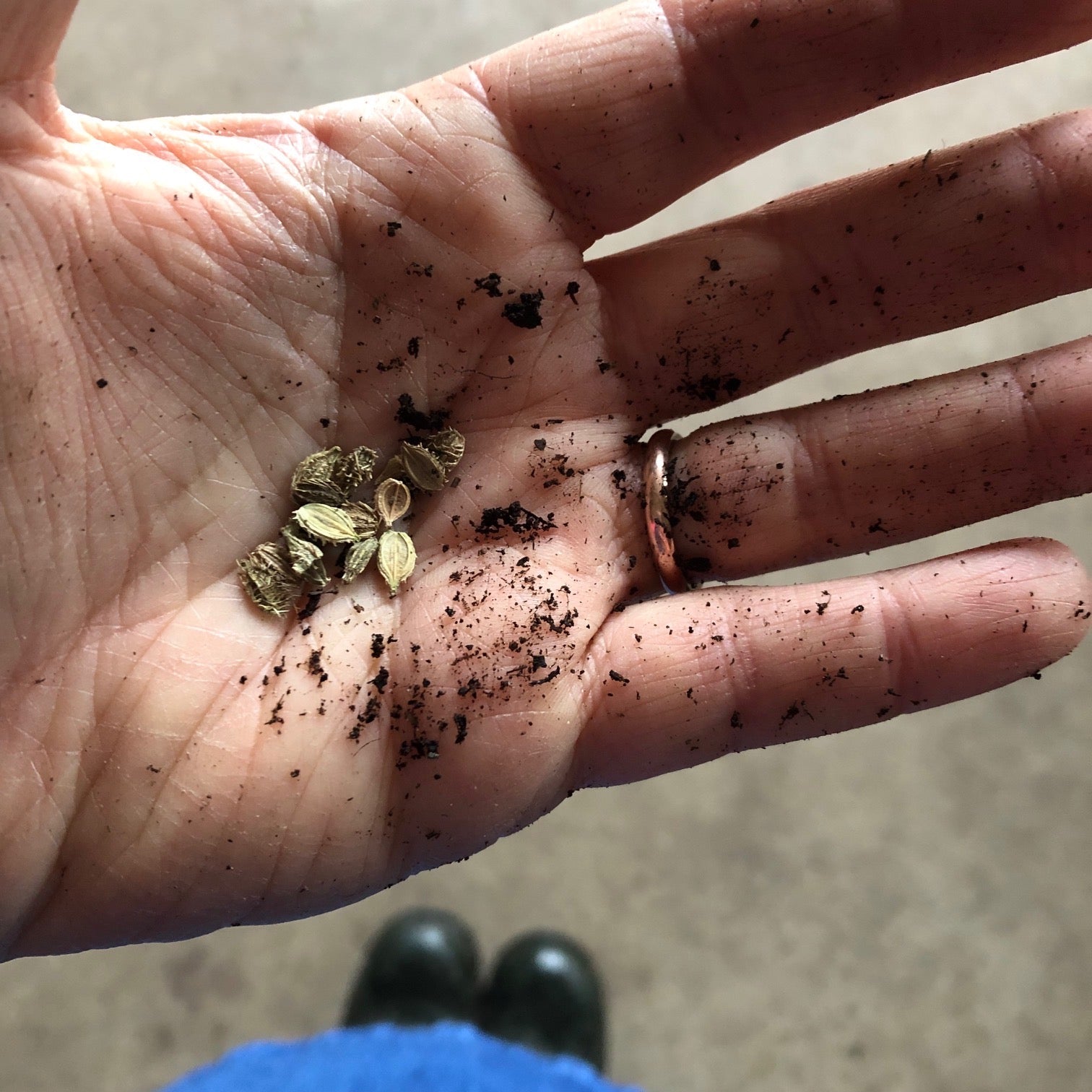Top tips for sowing cut flower seed

Today is the first Saturday after Valentine's day, and in many a flower farmer's callendar, this day is known as Seed Sowing Saturday.
At last we have ten hours of daylight and so seeds sown now will grow straighter and greener than their etiolated, yellowish cousins sown by the impatient grower in January.
However this is still no time to be sowing seed outside.
Today we sowed a selection of seeds which like a little bottom warmth to encourage germination, and a longish season to get going. So we sowed Orlaya, some scabious, a few different rudbekias (give me a rudbekia over a sunflower any day of the week!)
We don't sow very many seeds at a time - perhaps half a tray, rarely a whole tray of seeds, perhaps fifteen or twenty, rarely thirty or fourty seeds of any variety at any one time. We have a strict schedule of successional sowing through the season. We would rather have a few plants flowering their heads off at any one time, with a fresh crop coming on to flower in a month or six weeks' time, than a huge bed of any one cut flower variety which might all go over after a hot fortnight, or all be eaten off by greenfly, or all be infected by horrible rotting botritis.
We sow fresh seed, into high end compost - in our case we like Sylvagrow for sowing seeds - it's like sowing seed into the most five star cashmere blanket, but the germination rates make it worth the extra cost.
We use an endless array of carefully washed, variously ancient, plastic seed trays. They too are anything but single use, but as we use them up and they slowly crack into destruction, we will look into something like seed blocking for the future. I'm not a huge fan of sowing seed into something like loo rolls or pots made of old newspaper because, for me, they always go mouldy, I don't like mould in my greenhouse!.
Our newly seeded trays of compost are watered from underneath - NEVER from above. This way the compost slowly soaks up as much water as it can take, like a sponge. Watering from above makes a tidal wave which pushes seed all to one end of a tray, and then, after germination, watering from above can make you think the compost is nice and damp all through, but if you look, you may find that the water just sits on the top making a sort of crust, and the compost underneath is bone dry - no good for baby roots reaching down from a newly germinated seed!
We have a large collection of re-used plastic labels. With a little scrub the old writing comes off easily enough, and the new writing lasts long enough for us to know what the seeds will become. We label with the variety sown, the name of the seed supplier, and the date we sowed the seed.
These sparsly sown trays are then put under a little clear plastic lid (we have a selection of these plastic lids which have lasted us for years - looked after carefully between use they are anything but single use!) Under the clear plastic lids they are then put onto home-made hot beds in our small greenhouse where they'll germinate. Once germinated we get them off the hot beds fairly quickly and as soon as practical into the cold greenhouse where there's no heat.
These little seedlings will be hardlened off slowly through March and planted out at the end of March - in about six weeks. We'll have horticultural fleece to hand for when they're planted out, so that if there is a hard frost forecast we'll cover them up to protect them.
There is no way we'd be sowing this weekend if we didn't have a lot of space under cover to look after the seedlings until threat of bad frost is over. Tomorrow I'll direct-sow the spaces we have in the poly tunnels with umbellifers and clary sage and Chinese forget me nots and nigella. These are tough little people who won't mind no warmth under their bottoms and will germinate in really quite tough conditions. Our tunnels aren't heated, but they're a good deal warmer than outside, so seeds sown in them now give us an early crop which we'll cut for several weeks before anything outside starts flowering.
Here on our flower farm between Bruton and Wincanton in Somerset, and from where we send our flower delivery orders as bouquets by post and create our wedding flowers, everything begins with each single seed. The day we start sowing seed in spring is a day on which I feel such relief that the winter's working its way towards its end I have to concentrate hard not to over sow - not to get too excited with my seeds. I have a whole season of successional sowing to go after all, and need to manage my time, my space, and keep curating the varieties I grow so that they go well together to make lovely bouquets. I'm not growing a garden. I'm growing bouuqets.








